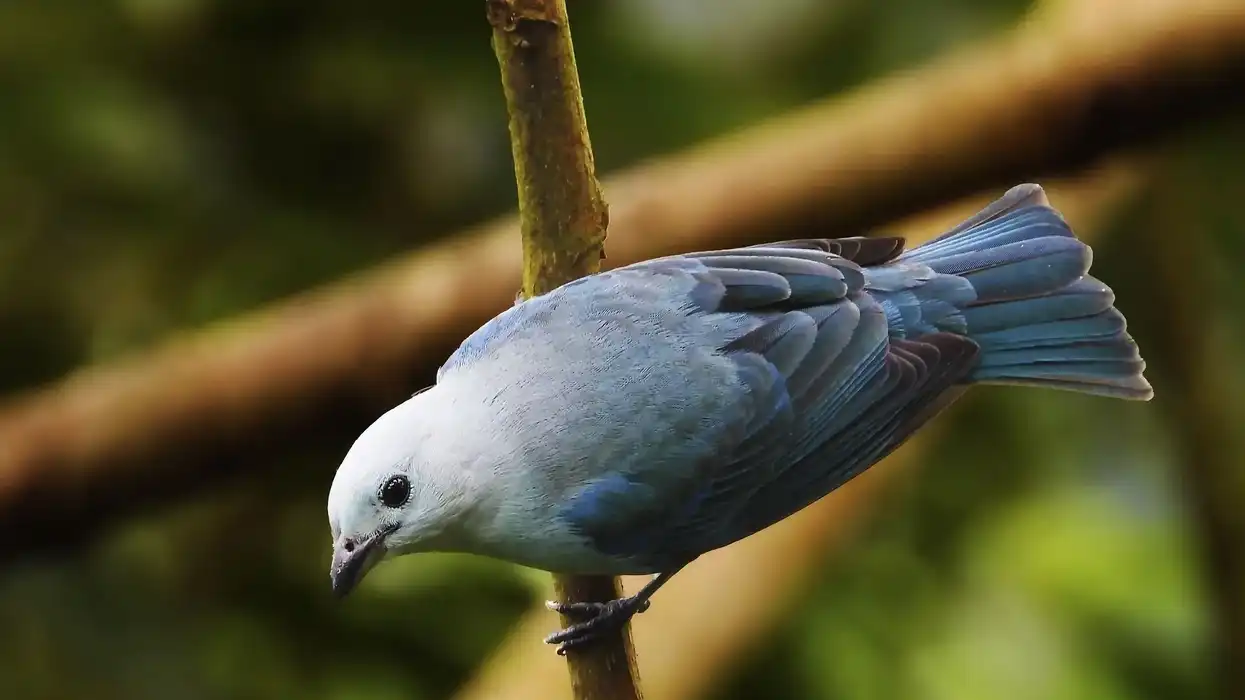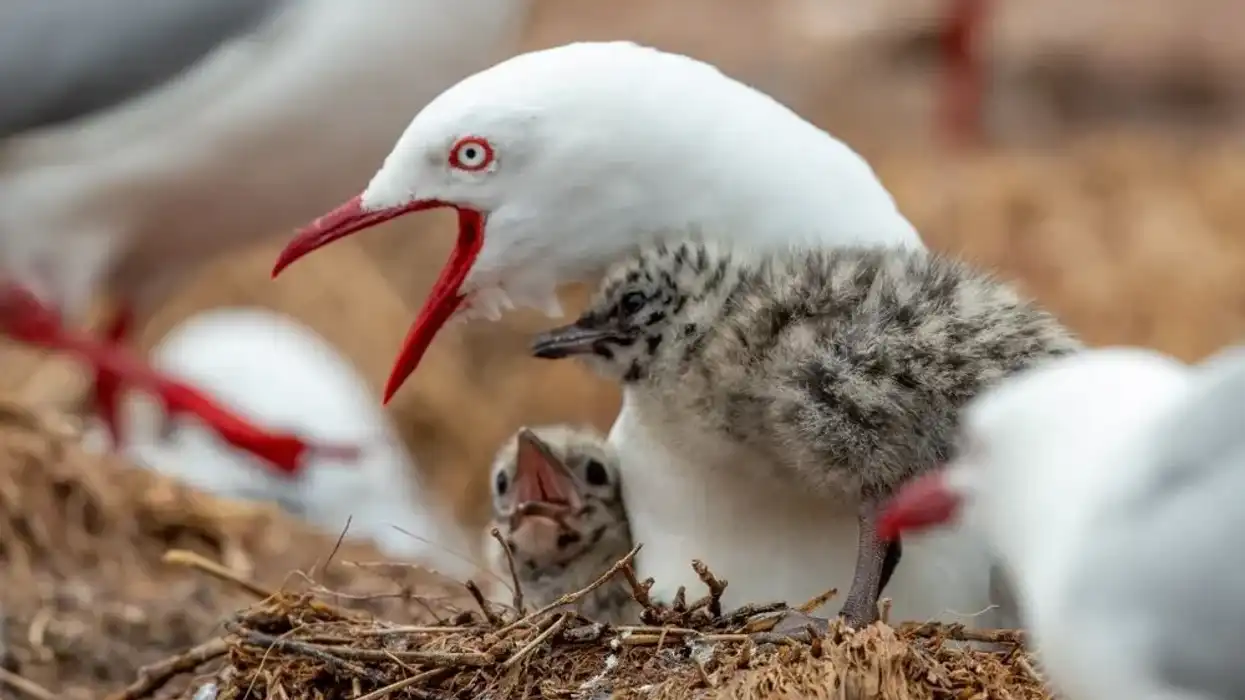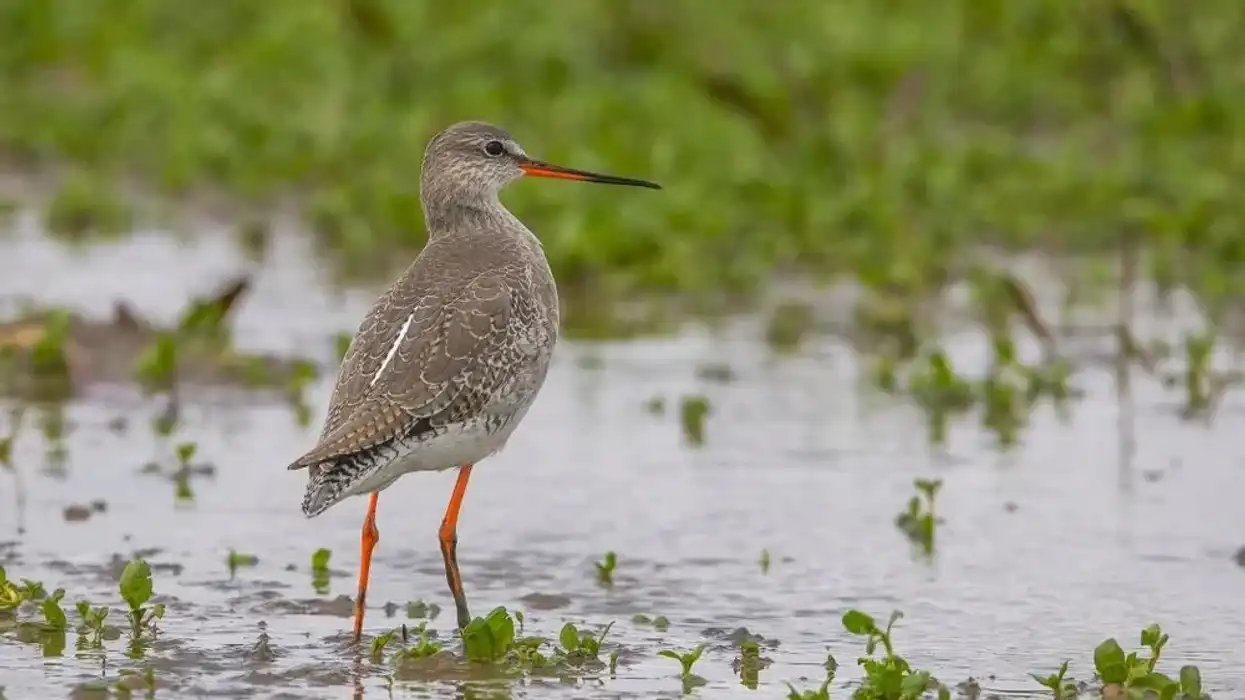The brown-headed gull (Chroicocephalus brunnicephalus) is a gull species having its range in various regions of central Asia. They are primarily a migratory species, known to travel far distances in the months of winter. This member of the Laridae family, genus Chroicocephalus is named for its dark brown head.
This species has a lot of resemblance with another species of its genus, the black headed gull (Chroicocephalus ridibundus). The most prominent difference between these birds is the color of their heads.
Earlier, the brown-headed gull was a part of the Larus genus. This gull species is highly gregarious in the winter season. They prefer staying in marshes, wetlands, or close to water sources like lakes and ponds.
For more relatable content, check out these least tern facts and laughing gull facts for kids.
Brown-Headed Gull Interesting Facts
What type of animal is a brown-headed gull?
The brown-headed gull is a type of gull.
What class of animal does a brown-headed gull belong to?
The brown-headed gull (Chroicocephalus brunnicephalus) belongs to the class Aves.
How many brown-headed gulls are there in the world?
There have been estimates made that there are about 100,000–200,000 individuals of this gull species currently surviving.
Where does a brown-headed gull live?
The distribution of the brown-headed gull is pretty widespread. Breeding grounds are situated among the beautiful high plateaus of central Asia. This extends all the way from Tajikistan to the city of Ordos in Mongolia. The migratory route of brown headed gull during the cold winter months extends inland lakes and the coasts of southern Asia.
What is a brown-headed gull's habitat?
These birds prefer freshwater habitats, wetlands, farmlands, marshes, coastal waters, towns, and gardens.
Who do brown-headed gulls live with?
Birds of this species are known to live in colonies.
How long does a brown-headed gull live?
The Larus brunnicephalus is said to have a lifespan of about 11 years.
How do they reproduce?
This gull bird species breeds between the months of May to July. The birds of this species are colonial breeders. They form large colonies, with the population ranging between 50 pairs to several thousand gull pairs. Their breeding grounds are on islands in lakes, marshes, or in large reedbeds.
They build their nests on the ground. The clutch size of the Larus brunnicephalus is usually 2-3 eggs. Larus brunnicephalus takes two years to reach maturity.
What is their conservation status?
The conservation status of these brown-headed birds is 'Least Concern'.
Brown-Headed Gull Fun Facts
What do brown-headed gulls look like?
The Chroicocephalus brunnicephalus is a small bird. However, it is bigger in size when compared to the black-headed gull. The summer adult gull has a visibly pale brown head, which is much lighter than the head of the black headed gull.
It has a pale gray body. This body is supported over red legs. The bird also has a small, stout red bill with a well-pronounced bulge on the mandibles. The black tips to the gull’s primary wing feathers have visible white ‘mirrors’.
These birds also have steep foreheads. In the winter season, the brown hood disappears, and only darker vertical streaks are present. The underwing is gray in color, with black flight feathers.
First-year gulls have a dark gray/black terminal tail band and dark regions in the wings. On the hot summer days, a less homogenous hood is visible.
The color of the iris changes as the birds grow. The brown headed gull juvenile has a dark iris, and as the gull grows, it becomes paler. Adults of this species have pale yellow irises.

How cute are they?
We would definitely rate these birds as cute ones!
How do they communicate?
The Chroicocephalus brunnicephalus communicates in loud ‘keear’ calls. Sometimes, they even make ‘geek geek’ sounds. When in colonies, these birds are really noisy.
How big is a brown-headed gull?
The Chroicocephalus brunnicephalus has a body length of about 15.75-17.72 in (40-45 cm).
This makes them about two times the size of the mountain bluebird.
How fast can a brown-headed gull move?
Sorry, we do not know the speed of this bird species.
How much does a brown-headed gull weigh?
This aquatic bird weighs between 0.99-1.54 lb (450-700 g).
What are the male and female names of the species?
There are no specific names assigned for male and female birds of this species.
What would you call a baby brown-headed gull?
Baby gulls are called gull chicks.
What do they eat?
These birds are opportunistic feeders. They will scavenge through towns in search of their prey. They mainly feed on fish, shrimp, offals, and fish waste. They also feed on invertebrates like insects, snails, spiders, larvae, earthworms, and millipedes.
Are they dangerous?
No, this bird is not dangerous.
Would they make a good pet?
We love the idea of keeping this bird as a pet.
Did you know...
The brown headed gull was earlier placed in the Larus genus.
This is not a pelagic species.
The genus name of this bird, Chroicocephalus, is derived from the Ancient Greek language. The term 'khroizo' translates to "to color", and 'kephale' means "head".
Do brown-headed gulls migrate?
Yes, the Chroicocephalus brunnicephalus migrates. This bird breeds across Kyrgyzstan, China, India, and Tajikistan. The adult birds migrate to the Indian subcontinent coasts, coasts of Southeast Asian countries, and even the Indo-Gangetic plains for the months of winter. The adult gulls then travel back to their breeding range in the months of March and April.
Comparisons with other gulls
The black-headed gull is often compared with the brown headed gull. Here, we discuss a few points of difference between the black headed gull and the Chroicocephalus brunnicephalus.
As the name suggests, the brown headed gull has a brown head, whereas the black headed gull has a black head.
The Chroicocephalus brunnicephalus has a larger body than the black headed gull.
The color of the iris changes as the Chroicocephalus brunnicephalus grows older. However, the black headed gull has a constant iris color from the juvenile stage to adult life.
The brown-headed gull has a steep forehead, but the head is not much round. The black headed gull on the other hand has a more rounded and smaller head.
The black headed gull has long white flashes on its primaries. The Chroicocephalus brunnicephalus has entirely black outer primaries.
The Chroicocephalus brunnicephalus has a short stout red bill. There is a big bulge at the gnoy spot. The black headed gull has a slimmer bill with a lesser prominent gnoy spot.
Here at Kidadl, we have carefully created lots of interesting family-friendly animal facts for everyone to discover! For more relatable content, check out these glaucous gull facts and kelp gull facts pages.
You can even occupy yourself at home by coloring in one of our free printable seagull coloring pages.









